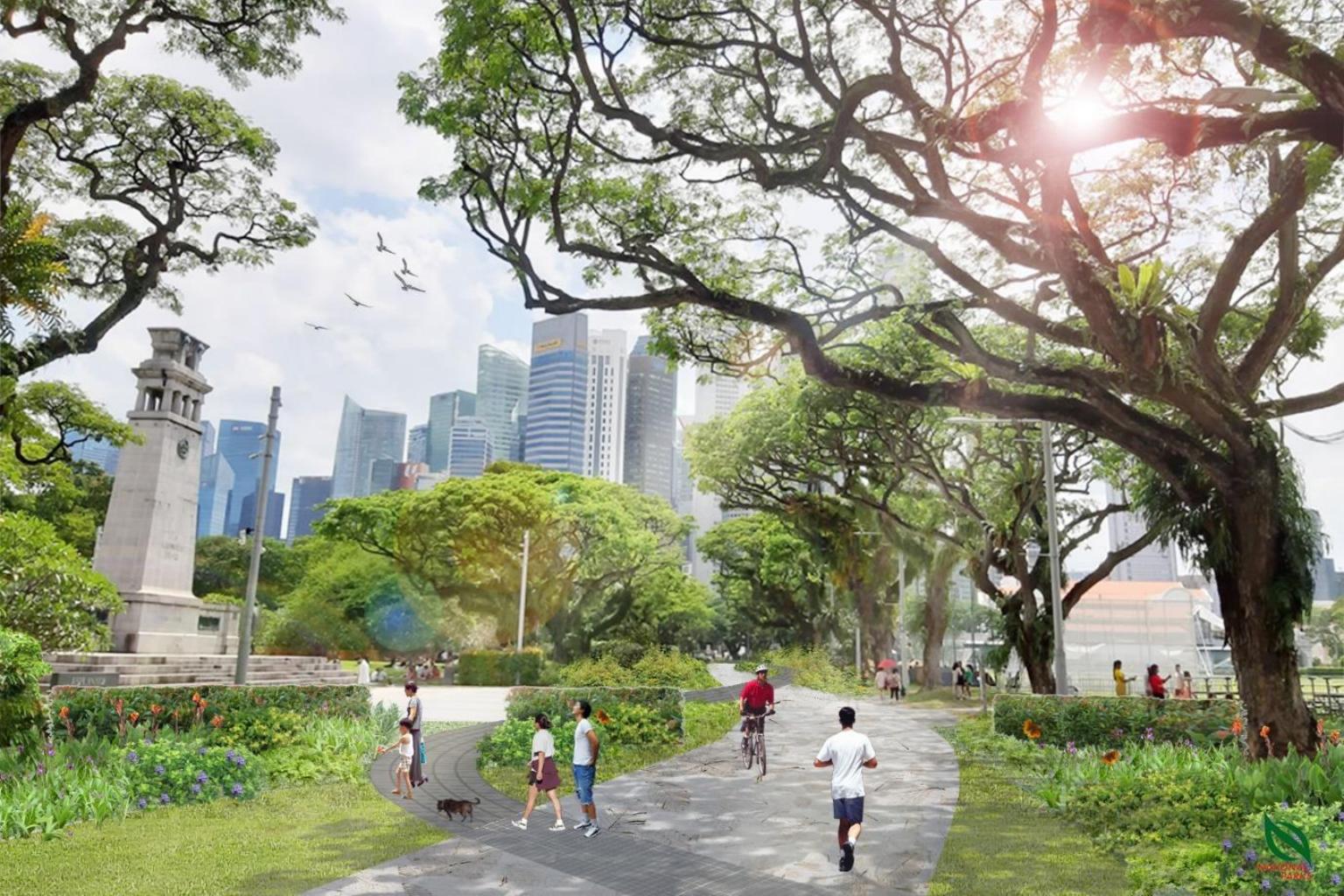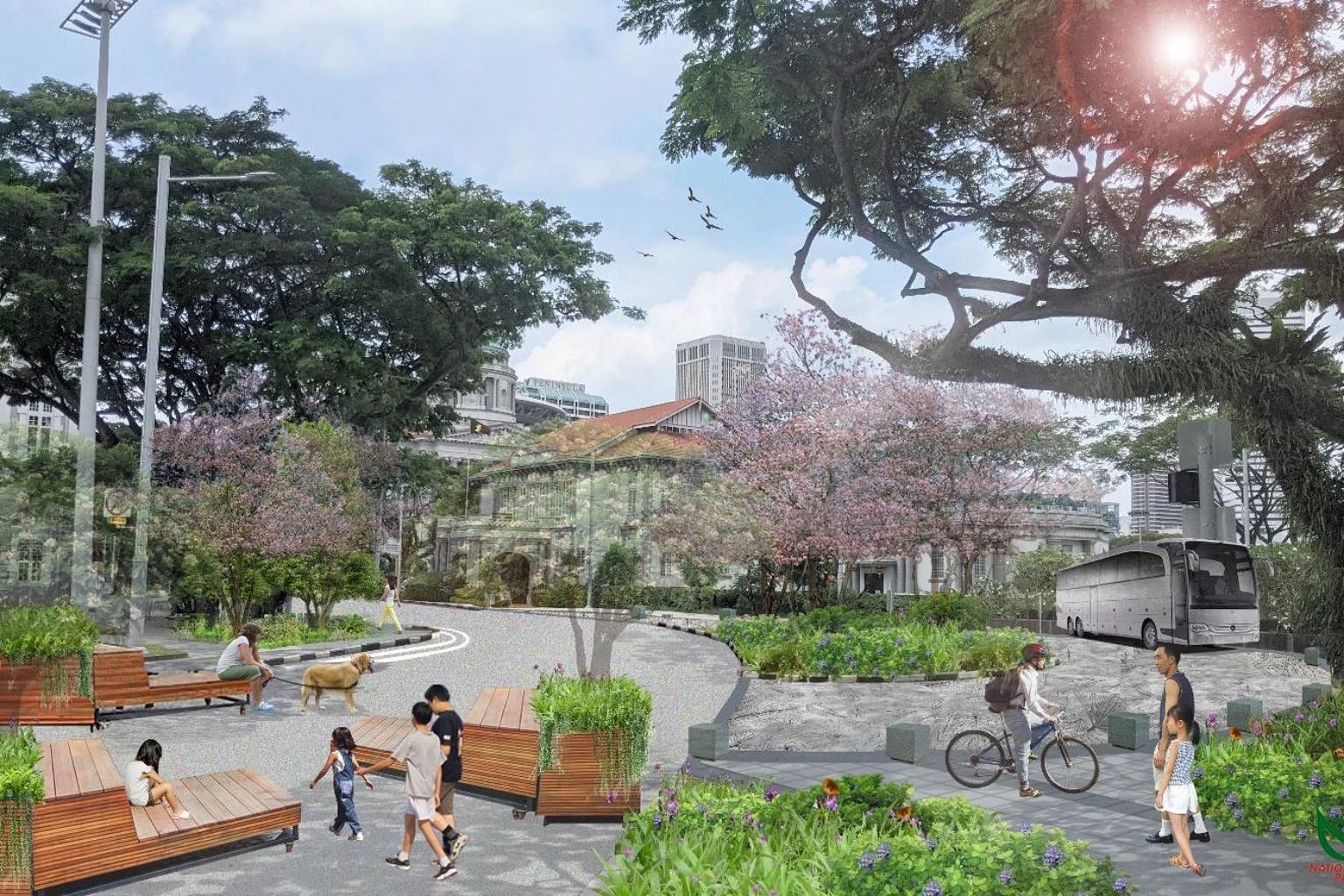Connaught Drive, Anderson Bridge to be pedestrian-only from end-2021
Sign up now: Get ST's newsletters delivered to your inbox

An artist's impression of the Civic District with the pedestrianisation of Connaught Drive and Anderson Bridge/Fullerton Road.
PHOTO: NPARKS
Follow topic:
SINGAPORE - A stretch of prime road in Singapore will be fully pedestrianised as the Government looks to make the civic district more people-friendly.
Connaught Drive and Anderson Bridge will be closed to motorists, allowing pedestrians to walk more easily between the Asian Civilisations Museum (ACM), Victoria Theatre and Concert Hall, the National Gallery Singapore and The Arts House.
Announcing this on Friday (Nov 5), the Land Transport Authority (LTA), the National Parks Board (NParks) and the Urban Redevelopment Authority (URA) said that traffic changes will begin from the end of next month.
LTA's chief executive Ng Lang said the latest pedestrianisation continues an effort by several agencies over the years to restore the beauty of public spaces in the civic district, "the birthplace of modern Singapore".
"We hope to offer visitors a green, idyllic and elegant cultural precinct where they can walk in leisure to enjoy a glimpse of the past without having to compete with vehicular traffic," he said.
The plans were first announced at the debate on the Ministry of Transport's budget in March this year.
Following the closure of vehicular traffic, the bus stop at Connaught Drive will be relocated to Esplanade Drive. The affected bus services are 75, 100, 107, 130, 131 and 167.
Coach pick-up and drop-off points in the area will be moved to the nearby roundabout at the Fullerton Road and Connaught Drive junction.
Parliament Place will reopen to cars so motorists still have access to the area.

To facilitate the move, there will be reconfiguration works at the following junctions:
- Parliament Place/St Andrew's Road
- Fullerton Road/Connaught Drive and
- Fullerton Road/Esplanade Drive
After the latest works have been completed, the agencies will work with stakeholders, including the Civic District Alliance, which consists of ACM, Esplanade - Theatres on the Bay, National Gallery Singapore, The Arts House and Victoria Theatre and Concert Hall, to plan open spaces to hold outdoor programmes for visitors.
Said the alliance: "These pedestrianisation plans are remarkable first steps to improve navigation and pedestrian connectivity not just within the area but also beyond the Civic District in future."
New signages and information posters have been put up at the ticketing machines and fare gates at City Hall and Raffles Place MRT stations to help visitors unfamiliar with the area with navigation.

Since 2015, the LTA, NParks and URA have been creating green spaces and walkable roads in the civic district, reclaiming the area from vehicles. For instance, Empress Place has been paved over to create a seamless park-like setting in front of the ACM and the Victoria Theatre and Concert Hall.
Then National Development Minister Khaw Boon Wan had said in 2014 that the area around the Padang will be turned into a walkable park, allowing people to more easily access its "history, memories, monuments and beauties".
On Friday, Senior Minister of State for Transport Amy Khor said on Facebook that the pedestrianisation of the two roads was finalised after four months of engagements with stakeholders. It should contribute to a more "seamless walking experience", she said, and expand green community spaces in the heart of the city.
Beyond the civic district, pedestrianisation efforts are also ongoing in heartland areas to reinforce Singapore's push to go car-lite.
The LTA identified about 60 sites in March where roads could be converted into footpaths, cycling paths or bus lanes, and has said that streets in estates like Sembawang, Bishan-Toa Payoh and Tanjong Pagar will be gradually reshaped.
National University of Singapore Associate Professor Raymond Ong said the project is also close to the blue space of the Singapore River, which increases the space's potential for activities.
"The project shows that pedestrianisation for car-lite Singapore is more than just street conversion to pedestrian use. It is about creating identity, inculcating activities and forming communities."

